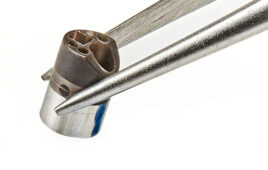Pressure ulcers (PU) continue to be a challenging problem for patients and health care professionals around the world. Evidence-based preventive solutions can, however, reduce the risk of PU occurrence and help reduce health care costs. In the first-ever consensus document addressing the role of dressings in PU prevention, published by the World Union of Wound Healing Societies (WUWHS) and supported by an educational grant from Mölnlycke Health Care[i], 11 leading experts make the case for dressings being used alongside standard PU preventive measures.
At the WUWHS Congress in Florence, the WUWHS consensus document, “Role of dressings in pressure ulcer prevention,” was first presented. As well as highlighting the patient-related and economic benefits of using polyurethane foam dressings in PU prevention, the authors of the document present a guide for clinicians on the appropriate use of dressings, and emphasize the need to consider them as a complement to standard PU prevention.
Pressure ulcers are localized injuries to the skin and/or underlying soft tissue that usually occur as a result of pressure in combination with three other elements—shear, friction and microclimate (temperature and moisture).[ii] They are a challenging problem and have a significant impact on patient health and quality of life. Pressure ulcer prevalence rates have been reported to be as high as 29.9 percent in nursing homes and 23 percent in hospitals throughout Europe and North America,[iii] and in the U.S. alone, pressure ulcers cost the hospital sector an estimated $11 billion per year.
“Recognition of the huge economic, health-related and social burden of PUs has resulted in considerable efforts to reduce their occurrence. Despite this, they still occur. It is our hope that the WUWHS consensus document will help clinicians and health care budget holders understand the role of dressings in PU prevention, as well as which dressings may protect against PU development and which patients may benefit,” said Professor Nick Santamaria, chair, Core Expert Working Group for the WUWHS consensus document, and professor of Nursing Research, Translational Research, University of Melbourne and Royal Melbourne Hospital, Australia.
Of the 23 clinical studies reviewed in the WUWHS consensus document, the majority showed significant decreases in PU occurrence following the use of preventive dressings. A substantial proportion of the scientific and clinical evidence supporting the use of prophylactic dressings relates specifically to multi-layer polyurethane foam dressings with Safetac (Mepilex Border Sacrum and Mepilex Border Heel) from Mölnlycke Health Care. The document further confirms that dressings should be applied to patients as soon as they have been identified as being at high risk of developing PUs.
Dressings differ in quality and construction. It is therefore important to select preventive dressings that have been proven to be effective in high-quality scientific and clinical studies. According to the WUWHS consensus document, dressings must mitigate the effects of the four extrinsic factors that contribute to pressure injury: pressure, shear, friction and microclimate. Understanding how dressing materials and construction affect the four factors helps to establish the ideal properties of a dressing for prevention. Clinicians should also be confident that both deep soft tissue deformations as well as superficial injuries are addressed when selecting preventive dressings.
“Pressure ulcer is the most frequent type of expensive, avoidable side-effect of care. The WUWHS consensus document provides important insight from leading experts in the field and reinforces Mölnlycke Health Care’s strategic focus on PU prevention,” according to Richard Twomey, CEO of Mölnlycke Health Care.
To download “Role of dressings in pressure ulcer prevention”: http://pup.molnlycke.com/
_____________________________________________________________
References:
(Source: Business Wire)




